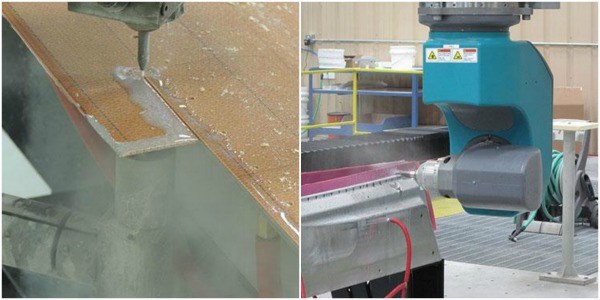When to Waterjet, When to Mill
A composite parts manufacturer in Nebraska recently installed a combined five-axis waterjet/milling machine to position itself to win large-scale aerospace work it sees on the horizon.
Share





Hwacheon Machinery America, Inc.
Featured Content
View More




This Composites Machining Cell enables Royal Composites to perform both five-axis waterjet and milling operations for large aerospace components.
Abrasive waterjet machines offer distinct advantages for trimming composite materials. For example, waterjet machining has inherently low cutting forces, so fixtures need not be as bulky as those required for conventional milling operations. Plus, garnet abrasive media serve as a waterjet stream’s “cutting edges,” and fresh media are continually introduced into the stream. Therefore, the stream’s cutting edges are always sharp, whereas conventional routing and drill bits can wear, possibly resulting in delamination or burred edge finishes. However, in some cases, milling is the only viable machining process due to fixturing interference or other issues.
In this story, learn how Royal Engineered Composites will use a machine that features both five-axis waterjet and milling capabilities to perform both of those operations as it goes after large-scale aerospace work.
Related Content
-
Shoulder Milling Cuts Racing Part's Cycle Time By Over 50%
Pairing a shoulder mill with a five-axis machine has cut costs and cycle times for one of TTI Machine’s parts, enabling it to support a niche racing community.
-
Five Common Mistakes Shops Make with ER Collets (And How to Prevent Them)
Collets play a crucial role in the machining process, so proper tool assembly and maintenance is important. Here are five potential pitfalls to avoid when using ER collets.
-
Selecting a Thread Mill That Matches Your Needs
Threading tools with the flexibility to thread a broad variety of holes provide the agility many shops need to stay competitive. They may be the only solution for many difficult materials.
.png;maxWidth=970;quality=90)

































.png;maxWidth=300;quality=90)
